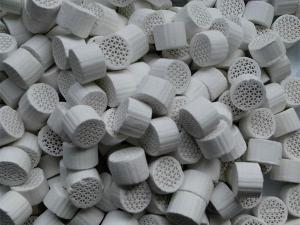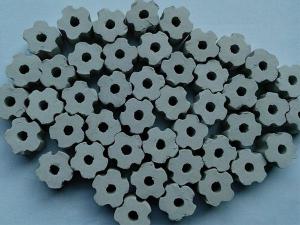Catalyst Support Media
-

- Honeycomb Ceramic Catalyst Support Media
The honeycomb ceramic catalyst support media have a much greater porosity than the porcelain ball, allowing the gas stream to flow through the reactor cover and the support layer at a slower flow rate, mixing the mix thoroughly, and effectively lowering the bed pressure drop. Therefore, honeycomb ceramic catalyst support media have advantages that the ceramic ball cannot compare, regardless of energy saving and running time.
-

- Environmental Catalyst Support Media
Environmental catalyst support media use high-purity aluminum oxide as raw material and add specialty additives, most often functioning as a protective agent for catalysts. In reaction towers, a certain amount of impurities will be filtered by material filter. However, particles and iron ions smaller than 25μm will still remain.
-

- Gasoline Hydrogenation Catalyst Support Media
Gasoline hydrogenation catalyst support media are mainly applied for removing iron, nickel, vanadium, calcium and sodium oil products. Besides, they also show an effect in eliminating sulfur from non-hydrocarbon materials. These metal sulfides reduce the activity of catalyst, increase resistance and pressure drop as well as shorten reaction cycle. With the assistance of catalyst bed support media, these negative effects will effectively slowed down.
-

- Residual Oil Hydrogenation Catalyst Support Media
The raschig ring type catalyst support media for residual oil hydrogenation is manufactured with holes that are smaller than 3000 nm or bigger than 10000 nm. Among them, the amount of 10000 nm above holes is more than 25%. As for seven-hole catalyst bed support media ball, it possesses high porosity and strength, providing protection for residual oil hydrogenation.




